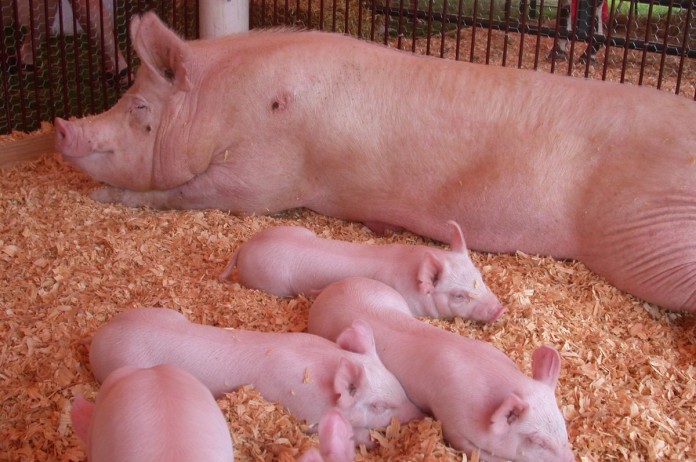WEST LAFAYETTE, Ind. — Much cheaper feed has led the pork industry to begin an expansion that is expected to continue throughout this year. The current expansion means that pork supplies will begin to grow more rapidly in the last-half of 2014, according to Chris Hurt, Purdue University Extension economist.
Feed prices are expected to remain moderate with corn prices only increasing seasonally into the summer and then dropping again with a normal 2014 harvest, aid Hurt. Soybean meal prices should move downward for most of the year as South American supplies come to market in the late-winter and spring, and then as larger U.S. soybean acreage continues to put downward pressure on meal prices through the fall.
Projected numbers
What will pork supplies be in 2014? Hurt said USDA reports the current number of market hogs to be down fractionally, but weights are expected to run about two percent higher and result in a one to two percent increase in pork production for the first-half of the 2014.
Farrowing intentions for this winter and coming spring are up one to two percent. With pigs per litter about 1.5 percent higher and higher weights, pork production in the last-half of 2014 will be up nearly four percent. Pork production is likely to continue to expand into 2015.
While farrowing intentions are up, Hurt said, USDA’s estimate of the breeding herd was down by 62,000 head, or one percent, said Hurt.
The declines were led by Western Corn Belt states of Iowa (-30,000 head), Minnesota (-10,000) and Missouri (-5,000).
Reduced corn yields in those states is a possible explanation of why pork producers were not as optimistic in those areas. Most states east of the Mississippi had record corn yields in 2013.
Pork demand in 2014 should remain strong based on limited competitive domestic meats and strong export demand, said Hurt. Total meat supplies (beef, pork, chicken, and turkey) will be little changed in 2014. Chicken production will rise about three percent and turkey about two percent.
Decrease
However, beef supplies are expected to drop six percent as a small calf crop and heifer retention will drag-down beef slaughter numbers. Retail pork prices will be much lower than beef and will thus continue to pull some consumption away from beef at the retail counter. USDA analysts expect pork export demand to increase by four percent and represent nearly 22 percent of total production.
Live hog prices averaged about $65 in 2013 and are expected to increase to about $66 for 2014. Hurt said the highest prices are expected in the second and third quarters with averages of $69 and $71 respectively. With the increasing production in the late summer and fall, hog prices will drop back below year-previous levels.
Key
Much lower costs of production will continue to be key to strong profit margins. From 2000 to 2006, the estimated total costs of raising hogs was about $36 per 100 live pounds, said Hurt. That reached a high on a calendar year basis of $67 in 2012.
Costs were estimated at $64 last year and are expected to average about $56 for the 2014 calendar year, said Hurt. Corn price was estimated near $6 a bushel for 2013 and is expected to drop to an estimated $4.45 in calendar 2014.
High-protein soybean meal averaged about $440 a ton FOB plant last year dropping to an estimated $395 a ton in 2014.
Profits for 2014 are estimated at $27 per head, the most profitable year since 2005 for pork producers. Profit margins are expected to narrow in the fall of 2014 and into 2015 as pork supplies increase.
However, Hurt said, returns still look to be profitable at least until the fall of 2015. This positive outlook should provide the foundation for additional expansion throughout 2014.











